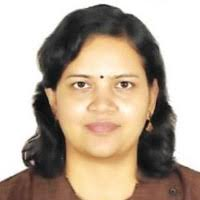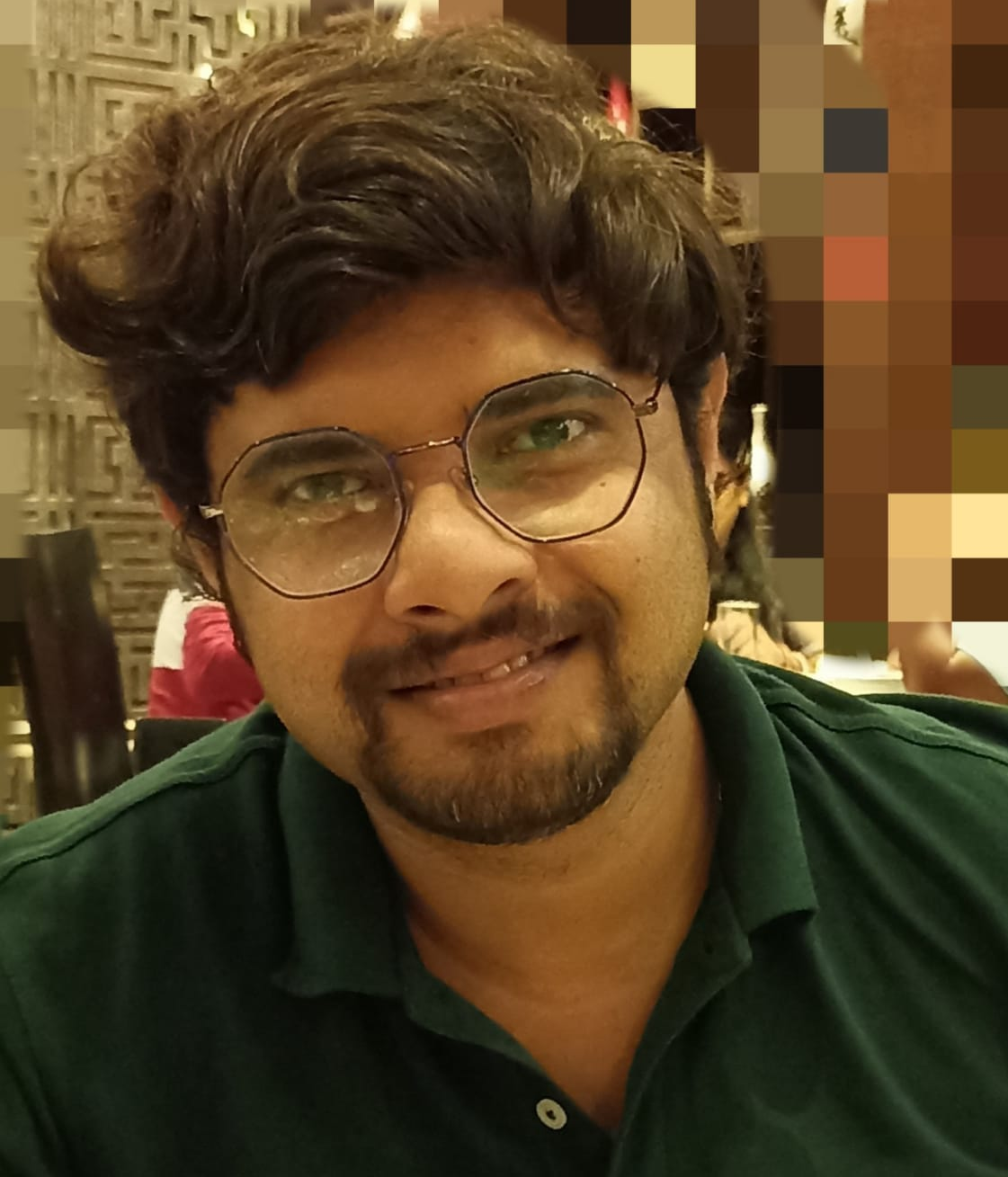Digital and Computational Oncology

Professor & Head: Dr. Swapnil Ulhas Rane
Overview
The Department of Digital and Computational Oncology was set up with a vision to use advances in Data Science and AI/ML technologies, to drive Oncology research and Clinical Practice. This department will usher in a transformative era in cancer care by leveraging artificial intelligence, machine learning, and data science to advance precision oncology, accelerate translational research, and innovative clinical trials. The Department of Digital and Computational Oncology envisions a future where data-driven insights seamlessly integrate with clinical expertise, empowering personalized treatment, enhancing patient outcomes, and redefining cancer research through ethical, collaborative, and impactful digital innovation. The department of Digital and Computational Oncology has subsumed within it the existing computational efforts in the areas of Computational Biology & Bioinformatics (Bioinformatics and Computational Biology Facility, BCBF), Computational Pathology, and other imaging driven AI (Computational Pathology & Imaging/AI Lab) as well as AI/ML for health records.
This Department aims to realise this vision by:
- Driving clinical research and innovation through Big data analysis, software development, artificial intelligence and machine learning services on TMC data.
- Facilitating innovative data driven and AI/ML enhanced research (clinical trials and laboratory studies) into cancer biology, management and control.
- Converting research outcomes into tools/models, applicable in the clinics and laboratories.
- Training engineering, medical and biology students, researchers and practising clinicians through PhD and other allied training programs in these transdisciplinary areas.
Administrative Divisions
- Research Division
- OPS Division
- Software Development Division
Functional Divisions
The department is functionally grouped into the following divisions, comprising select individuals from each administrative division, being grouped according to the academic/clinical/research areas they work in. These functional divisions allow people with different skills to work towards common goals.
- Computational Biology
- Genomics
- Structural biology
- Computational Imaging
- Pathomics and Pathology Image Processing
- Radiomics, Radiation Oncology, Radiology and Other related Image Processing
- Other Images
- Health Records (EMR/EHR and others)
Computational Resource Access for Scientific Computing Applications
The department provides access to the computing resources at its disposal, for research and academic use, to all bona fide members of all TMC units, units affiliated to DAE, collaborators of TMC faculty, and any other not-for-profit academic/research organization.
The access policy is detailed in this document.
If your use case is not listed or you need more guidance, you may contact the department at digitalcomputonco.dept@actrec.gov.in
The Department manages a High Performance Computing Centre with the following resources
1. High Performance Cluster Nodes
These are primarily CPU-based nodes (with a few GPU nodes) meant for genomics, bioinformatics, and other omic analysis. Image analysis and other GPU-intensive applications can be performed on the GPU nodes. For access to this compute resources, bona fide users need to fill out this form:https://forms.gle/QV8ixvXjASjuQaxr7 The following clusters is currently available
- Bioinfinix Cluster This is the latest cluster established in 2025, and is the primary cluster to which access can be provided, subject to the availability of free resources.
| Component | Accelerator | Queue (job time limit) | Node count | CPU Core count (per node) | RAM in GB (per node) |
|---|---|---|---|---|---|
| Admin nodes (not for analysis) | - | - | - | - | - |
| Head Nodes | - | - | 2 | 52 | 256 |
| Login Nodes | - | - | 2 | 52 | 512 |
| User nodes available for analysis | - | - | - | - | - |
| Compute Nodes | - | short (24h), medium (72h), long (168h) | 39 | 56 | 256 |
| Clinical Compute Nodes | - | clinical (24h) | 1 | 56 | 256 |
| High-Memory Nodes | - | hmq (168h) | 2 | 128 | 2048 |
| GPU Nodes 1 | 2 x H100 (80GB) | H100 (48h) | 2 | 64 | 256 |
| GPU Nodes 2 | 2 x A40 (48GB) | a40(24h) | 2 | 56 | 256 |
| GPU Nodes 3 | 1 x A40 (48GB) | clinical-a40(24h) | 1 | 56 | 256 |
GPU Server for DL/AI/ML/Image processing
These are multi-GPU servers with the latest NVIDIA GPUs, specifically designed for deep learning, AI/ML, and Image processing applications where GPU-based processing is essential. For access to these computer resources for bona fide users, contact us at digitalcomputonco[dot]dept[at]actrec[dot]gov[dot]in
- HPE Apollo Gen-10 8x A100 Computing Server: 8x A100 accelerators, 128 CPU cores, 2TB RAM, 30TB NVME SSD with a combined performance of 5 petaflops for AI workloads.
- 8x H200 Computing Server: in-process
Scientific AI/ML Model Deployment
- In addition to the scientific compute resources for research, the department manages model deployment and hosting environments on virtual machines using on-premise servers and HCI with GPUs for deploying AI/ML models, websites, and other user-facing applications. The following services/models are deployed for use within TMC or with public access:
| Division | Service Name | Description | Link |
|---|---|---|---|
| Computational Imaging | Whole Slide Imaging | Brightfield Scanning service for standard size histology slides. Service is available for researchers from within and outside TMC | http://10.100.36.253/actapps/WSI.aspx |
| Colony Counting Tool | Cell culture colony counting tool for researchers for standard 2x3 cell culture plates | http://10.100.76.82:8501/ |
Medical & Scientific Data Storage
The department offers short-term and long-term enterprise-grade storage for laboratories, departments, and staff from within TMC to support them in their academic and research pursuits. If you are a bona fide TMC employee/faculty/student, please get in touch with us with your requirement at digitalcomputonco[dot]dept[at]actrec[dot]gov[dot]in
Glass slide Digitization/Whole slide Scanning Service
Digitization of standard Glass slides for brightfield imaging is provided as a paid service in coordination with the Computational Pathology Laboratory, for academic usage only, to researchers within TMC, DAE, as well as researchers outside TMC/from other organizations.
For researchers within TMC, please use the following requisition system for raising a request for slide digitization
http://10.100.36.253/actapps/WSI.aspx. For researchers outside TMC, please contact us at tmccomputpath[at]actrec[dot]gov[dot]in or digitalcomputonco[dot]dept[at]actrec[dot]gov[dot]in
Data Analytics & Consulting Services
The department provides analytical services for computational biology, computational imaging, AI/machine learning/deep learning projects to bona fide TMC students/faculty, and employees. If you have a project where you need AI/ML/DL/bioinformatics expertise, please get in touch with us at digitalcomputonco[dot]dept[at]actrec[dot]gov[dot]in. A requisitioning system available on the ACTREC Intranet apps page at http://10.100.36.253/DCOReqPortal/
Collaborative Projects
If you wish to collaborate with us, you may please contact the individual staff member on their email addresses mentioned below, or the department at digitalcomputonco[dot]dept[at]actrec[dot]gov[dot]in
- PhD in Healthcare/Oncology Data Science & AI/ML:
- Post-Doctoral Program in Healthcare/Oncology Data Science & AI/ML:
- Observer, Internships, Short-term Fellowships
- For engineering/data science/bioinformatics/AI/ML students under the guidance of the Research Division Staff.
- For graduate, postgraduate, and super-speciality medical students, and practicing medical doctors
- Long-term fellowships
The department plans to conduct a PhD program with a focus on Healthcare Data Science and AI/ML. Candidates will be selected through the GATE, and other entrance examinations as per TMC guidelines, spanning areas of Computational Biology, Bioinformatics, Computational Image Processing, Computational processing of EHR, etc., for Healthcare applications.
The department plans to run a post-doctoral program spanning areas of Computational Biology, Bioinformatics, Computational Image Processing, Computational processing of EHR, etc., for healthcare applications.
The department will host the following short-term fellowships/internships (weeks to months):
The department will start 2-year HBNI fellowships & 1-year TMC fellowships in partnership with existing medical departments for post-graduate and super-speciality doctors having completed their qualifying degree.
Projects & Areas of Active Research
| Division | Projects |
|---|---|
| Genomics |
|
| Molecular Modeling |
|
| Computational Imaging |
|
| Health Records | LLMs for mining pathology records and clinical notes |
 | Dr. Prof. Swapnil Ulhas Rane |
 | Mr. Nikhil Gadewal |
 | Dr. Pratik Chandrani |
 | Dr. Tripti Bameta |
 | Dr. Gourab Das |
- Baid, U., Rane, S. U., Talbar, S., Gupta, S., Thakur, M. H., Moiyadi, A., & Mahajan, A. (2020). Overall Survival Prediction in Glioblastoma With Radiomic Features Using Machine Learning. Frontiers in Computational Neuroscience, 14, 513481. https://doi.org/10.3389/fncom.2020.00061
- Baid, U., Talbar, S., Rane, S., Gupta, S., Thakur, M. H., Moiyadi, A., Sable, N., Akolkar, M., & Mahajan, A. (2020). A Novel Approach for Fully Automatic Intra-Tumor Segmentation With 3D U-Net Architecture for Gliomas. Frontiers in Computational Neuroscience, 14, 495068. https://doi.org/10.3389/fncom.2020.00010
- Anand, D., Yashashwi, K., Kumar, N., Rane, S., Gann, P. H., & Sethi, A. (2021). Weakly supervised learning on unannotated H&E-stained slides predicts BRAF mutation in thyroid cancer with high accuracy. The Journal of Pathology, 255(3), 232-242. https://doi.org/10.1002/path.5773
- Patil, A., Diwakar, H., Sawant, J., Kurian, N. C., Yadav, S., Rane, S., Bameta, T., & Sethi, A. (2022). Efficient quality control of whole slide pathology images with human-in-the-loop training. Journal of Pathology Informatics, 14, 100306. https://doi.org/10.1016/j.jpi.2023.100306
- Gadewal N, Patidar D, Natu A, Gupta S, Bastikar V. In silico screening of phytochemicals against chromatin modifier, SETD7 for remodeling of the immunosuppressive tumor microenvironment in renal cancer. Molecular Diversity. 2024 Nov 27.
- Gadewal N, Natu A, Sen S, Rauniyar S, Bastikar V, Gupta S. Integrative epigenome-transcriptome analysis unravels cancer-specific over-expressed genes potentially regulating immune microenvironment in clear cell renal cell carcinoma. Biochimica et Biophysica Acta (BBA) - General Subjects. 2024 May;1868(5):130596.
- Dey P, Gadewal N, De A. Pathogenic HER3 dimerization domain mutations create a structural bias towards un-conventional EGFR-HER3 signalling axis in breast cancer. International Journal of Biological Macromolecules. 2023 Jul 1; 242:124765.
- Shah SG, Mandloi T, Kunte P, Natu A, Rashid M, Reddy D, Gadewal N, Gupta S. HISTome2: a database of histone proteins, modifiers for multiple organisms and epidrugs. Epigenetics & Chromatin. 2020 Aug 3;13(1):31.
- Bhattacharya S, Reddy D, Jani V, Gadewal N, Shah S, Reddy R, Bose K, Sonavane U, Joshi R, Gupta S*. Histone isoform H2A1H promotes attainment of distinct physiological states by altering chromatin dynamics. Epigenetics & Chromatin. 2017 Oct 18; 10(1):48.

